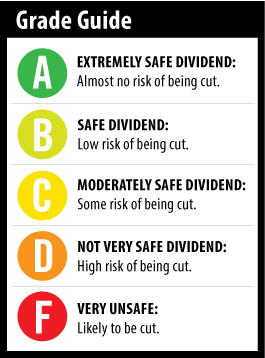 Several readers have asked me to review the dividend safety of Windstream (Nasdaq: WIN).
Several readers have asked me to review the dividend safety of Windstream (Nasdaq: WIN).
Some investors are nervous about the sector after CenturyLink (NYSE: CTL) cut its dividend by 26% in February – a move that sunk the stock by 23% immediately after.
Windstream, another high-yielding telecom, was also hammered, falling 8%, and has never recovered. The shares are now 16% below where there were before CenturyLink’s dividend reduction.
[ad#Google Adsense 336×280-IA]Wall Street appears to have lumped Windstream in with CenturyLink and Frontier Communications (Nasdaq: FTR), which cut its dividend last year…
So, is Windstream the next high-yielding telecom company to slash its dividend?
Many investors who look at the company’s meager profits think so.
After all, how can it continue to pay over $500 million per year in dividends when it earns less than $200 million in net income?
Do Profits Matter?
Those investors are looking at the wrong metric. While it’s true that Windstream only earned $168 million last year, it generated $676 million in free cash flow.
If this is not the first Safety Net column that you’ve read, you know that I focus on cash flow, especially free cash flow, for most stocks as it is a much more accurate indicator as to whether a company is able to sustain its dividend.
Windstream pays a dividend of $0.25 per quarter, as it has since 2007, paying investors a very strong 12% annual yield.
The payout ratio, which is the percentage of net income (or cash flow) that is paid out in dividends, is quite high. In 2012, the payout ratio was 87%. I usually want to see a payout ratio of 75% or lower. That way if the business hits a rough patch, the dividend isn’t in jeopardy.
In 2011, the payout ratio was an uncomfortable 97%.
It gets worse. In the first quarter of 2013, Windstream paid out $148 million in dividends despite generating just $61 million in free cash flow. In fact, in three of the past four quarters, dividends paid have outpaced free cash flow.
However, this year, if the company generates the $785 million in free cash flow that Wall Street expects, the payout ratio should fall to 75%. Next year, Wall Street predicts cash flow of over $800 million, which should make the dividend even more secure.
Commitment to the Dividend
Management is keenly aware of the importance of the dividend. On its first quarter earnings conference call, CEO Jeff Gardner stated, “[T]he dividend remains core to Windstream’s strategy and we believe it is the best way to return value to our shareholders.”
On the same call CFO Tony Thomas said, “[W]e are well positioned to maintain our current dividend practice.”
The risk is that the company doesn’t execute and generate enough free cash flow to sustain the dividend. But considering Windstream’s commitment to the dividend, I expect it to do whatever it takes to avoid a cut. It has a track record of keeping the dividend stable even in tough times. Of course, it can’t go on forever if the cash flow isn’t there, but for the next 12-24 months, I believe the company should be able to keep shareholders happy with that 12% annual yield.
Dividend Safety Rating: B
 — Marc Lichtenfeld
— Marc Lichtenfeld
[ad#newsmax-article]
Source: Wealthy Retirement



